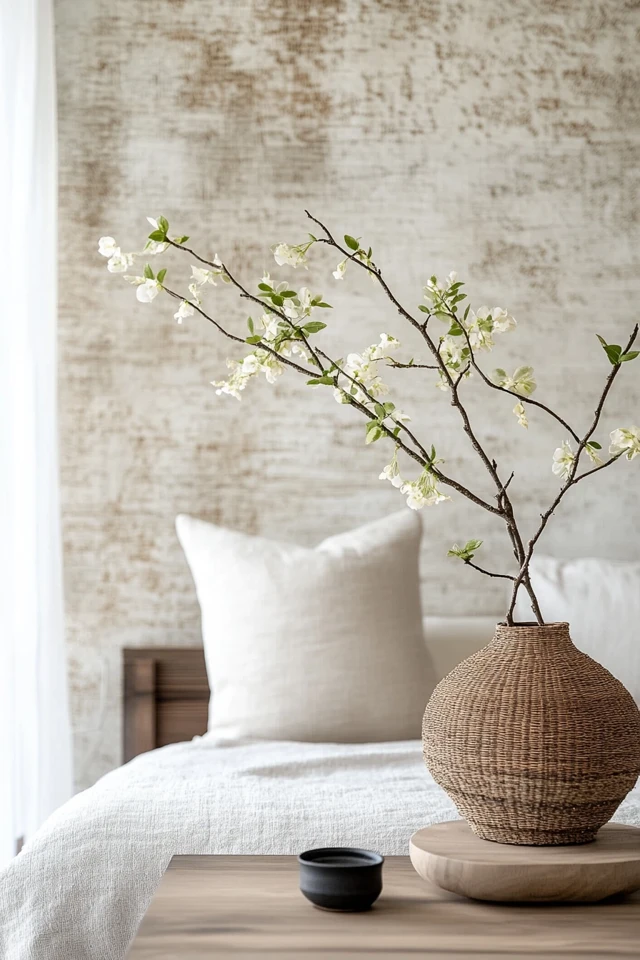Scandinavian design is synonymous with minimalism, clean lines, and a harmonious color palette. While its simplicity is part of its charm, the key to creating a truly captivating Scandinavian interior lies in the artful use of subtle contrast. Adding contrast doesn’t mean disrupting the calm, serene vibe of the space; rather, it involves introducing complementary tones, textures, and materials that create depth and visual interest while preserving the understated elegance of Nordic design.
I experienced the power of subtle contrast firsthand when decorating my Scandinavian-inspired living room. Initially, everything was light and monochromatic—white walls, beige furniture, and natural wood finishes. While the room was serene, it felt flat and lacking dimension. By adding dark gray cushions, a black metal floor lamp, and a woven jute rug, the space was transformed. These contrasting elements created depth without overwhelming the room, enhancing its minimalist charm while making it feel warmer and more dynamic.
If you’re aiming to elevate your Scandinavian décor with subtle contrast, this guide will walk you through how to strike the perfect balance. From playing with color and texture to incorporating different materials, you’ll discover how to achieve a space that’s calm yet captivating.
Why Subtle Contrast is Essential in Scandinavian Décor
1. Creates Visual Depth
Scandinavian interiors often feature a monochromatic or neutral palette. While this creates a calming effect, it can sometimes make a space feel flat. Adding contrast through darker tones, textured materials, or bold shapes introduces depth and dimension without detracting from the simplicity of the design.
For instance, pairing a soft white sofa with a charcoal throw blanket and a light wood coffee table creates layers within the space. This subtle interplay of light and dark keeps the room visually engaging while maintaining its understated appeal.
2. Enhances Warmth and Balance
Scandinavian design is all about balance and comfort. Subtle contrast, such as warm wood tones paired with cooler gray accents, ensures that the space doesn’t lean too cold or sterile. It helps to balance light and dark, soft and hard, or smooth and rough surfaces, resulting in a well-rounded, inviting room.
Imagine a light gray Scandinavian dining table with black matte chairs. The contrast not only adds definition but also highlights the warmth of the natural wood tones in the flooring or walls.
3. Accentuates Key Features
Subtle contrast is a great way to draw attention to specific elements in your space. Darker or textured pieces naturally stand out against a light, neutral backdrop, making them focal points without overwhelming the design.
A matte black pendant light, for example, becomes an eye-catching feature when suspended over a white dining table, creating a striking yet subtle effect.
How to Use Subtle Contrast in Scandinavian Décor
Step 1: Contrast Light and Dark Tones
Scandinavian design typically revolves around light colors like white, cream, and light gray. To add contrast, introduce darker hues sparingly. Black, charcoal, and deep navy are excellent choices that align with the minimalist aesthetic while providing visual weight.
Start small by incorporating darker accents like throw pillows, picture frames, or a black floor lamp. These elements punctuate the space without disrupting its airy feel. For more pronounced contrast, consider adding a dark feature wall in the bedroom or a black-framed glass partition in an open-plan living area.
Step 2: Combine Different Textures
Texture is an essential element of Scandinavian design and a great way to add subtle contrast. Pair smooth, sleek surfaces with soft, tactile materials to create depth and interest. For instance, a velvet cushion on a linen sofa or a jute rug beneath a glass coffee table provides an intriguing mix of textures.
Layering is key: combine fluffy wool throws with structured leather chairs or pair a woven basket with polished wood furniture. These contrasts in texture create a cozy yet sophisticated vibe that embodies the concept of hygge.
Step 3: Play with Materials
Scandinavian design emphasizes the use of natural materials, and combining different materials is an excellent way to introduce contrast. Mix light woods like birch or oak with darker finishes such as walnut or black-stained wood. Incorporate metal, stone, or ceramic elements to add diversity to the space.
For example, a whitewashed oak dining table paired with black metal chairs creates a striking balance between natural and industrial elements. Similarly, a marble countertop paired with matte black faucets adds refinement and contrast to a Scandinavian kitchen.
Step 4: Use Bold Shapes Against Minimalist Backdrops
Scandinavian interiors are typically minimalist, making them the perfect canvas for introducing contrast through bold or geometric shapes. A sleek black arched floor lamp or a curvaceous accent chair against clean-lined furniture adds a touch of drama without overpowering the space.
You can also experiment with asymmetrical décor items, such as an irregularly shaped ceramic vase or an abstract mirror. These pieces stand out in a subtle yet impactful way, adding a modern edge to the design.
Step 5: Incorporate Subtle Color Accents
While Scandinavian design is often associated with neutral tones, introducing muted or pastel colors can provide a gentle contrast. Soft greens, dusty pinks, or pale blues can add warmth and personality without straying too far from the minimalist aesthetic.
Consider adding a sage green blanket on a light gray sofa or hanging pastel artwork on a white wall. These small pops of color enhance the space without detracting from its serene atmosphere.
Step 6: Highlight Architectural Features
Use contrast to emphasize architectural elements in your space. Exposed wooden beams, black window frames, or white-painted brick walls can serve as natural focal points when paired with lighter or darker elements.
For instance, a Scandinavian loft with white walls and black-framed windows can be softened with light wood furniture and neutral textiles. This approach highlights the architectural details while maintaining the airy, minimalist feel.
Step 7: Add Contrast Through Décor Accessories
Decorative accessories are one of the easiest ways to add subtle contrast. A matte black vase, a ceramic bowl in a bold shape, or a dark woven basket can instantly elevate the look of a light-colored space. These small additions make a big impact when styled thoughtfully.
For example, place a black tray on a white coffee table and style it with a few neutral-toned candles and greenery. This creates a layered, balanced look that feels cohesive yet visually interesting.
Picture Gallery
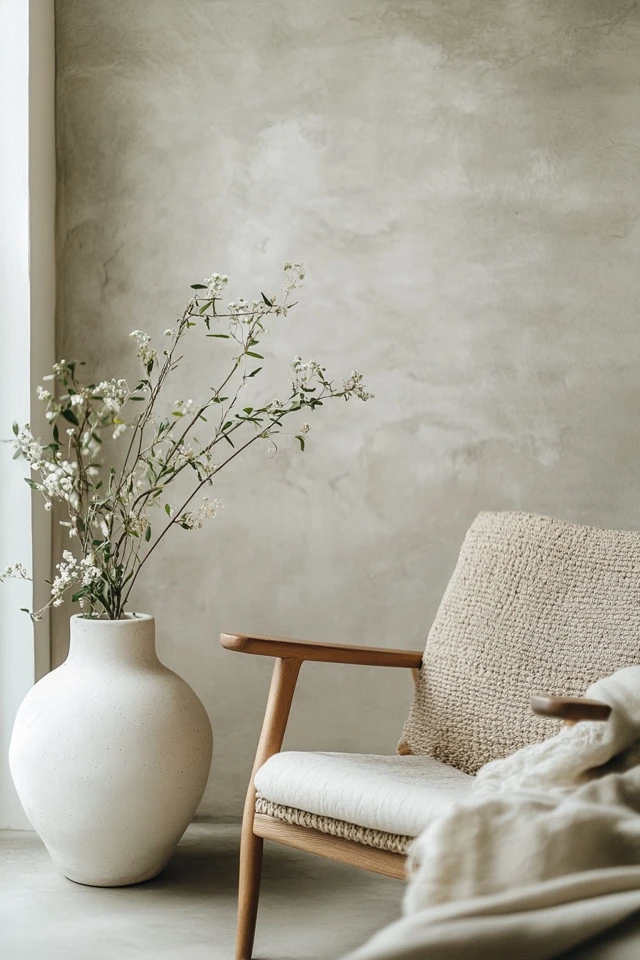
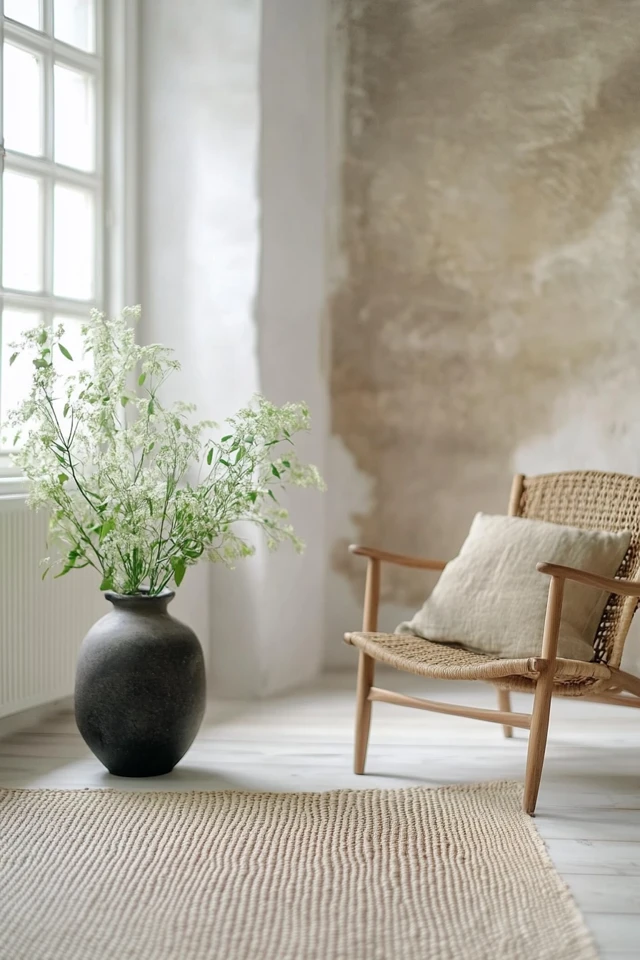
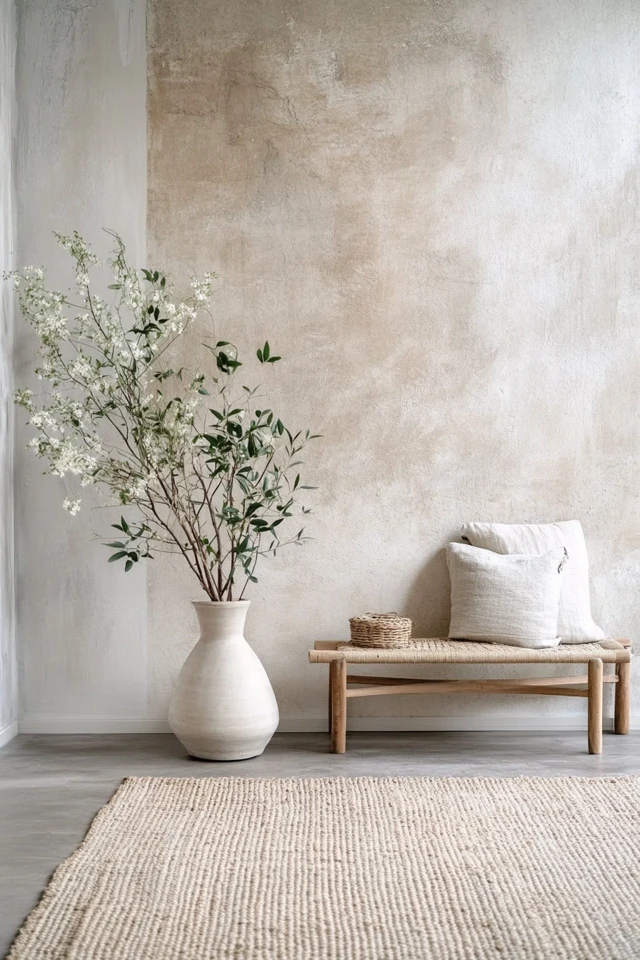
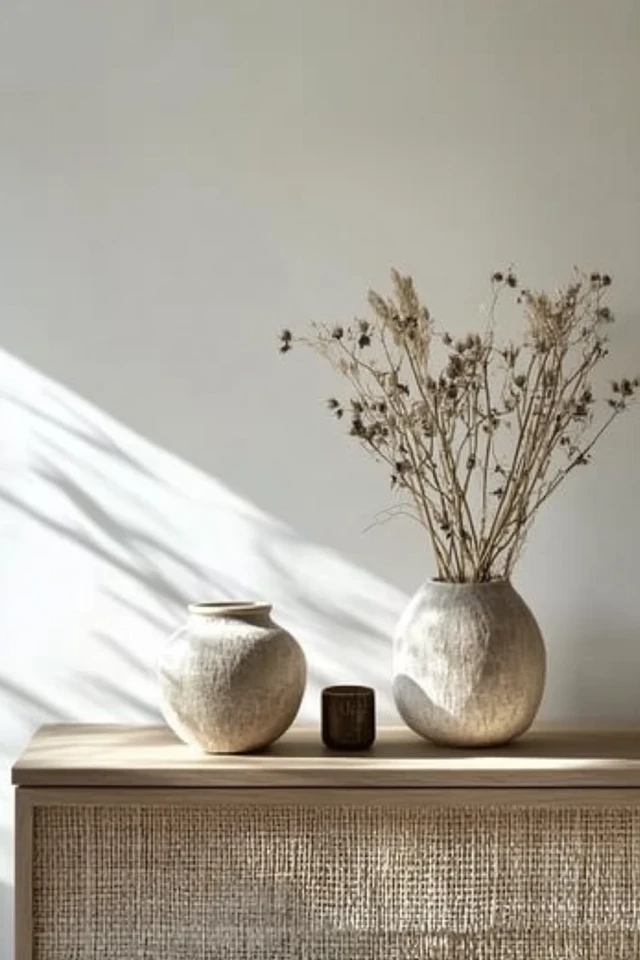
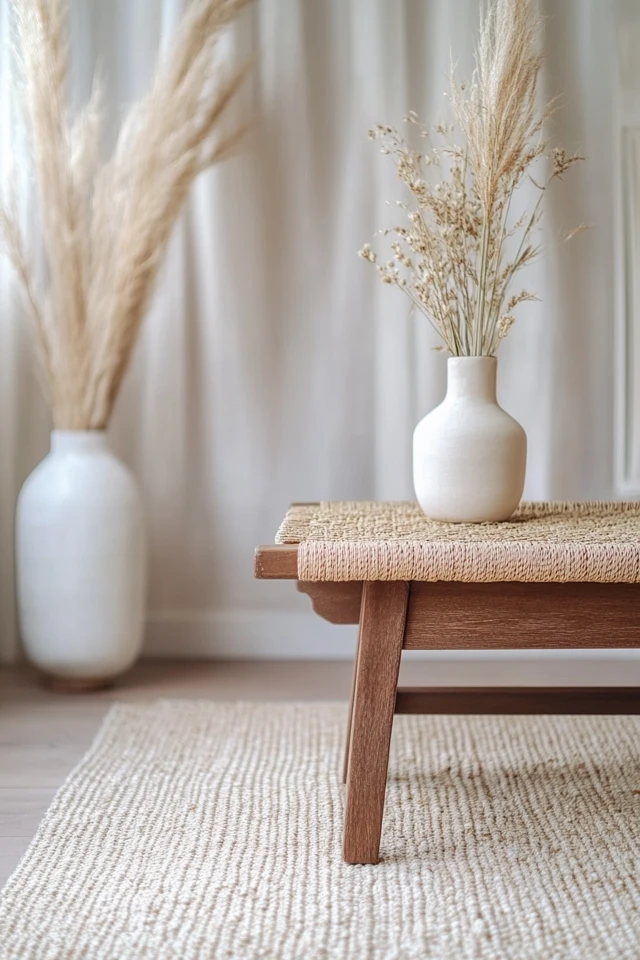
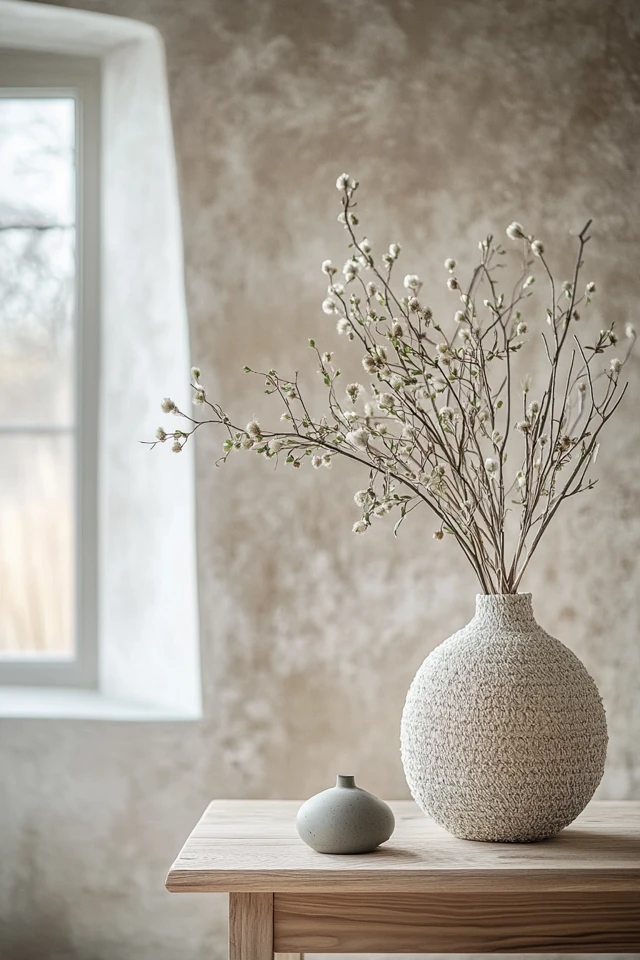

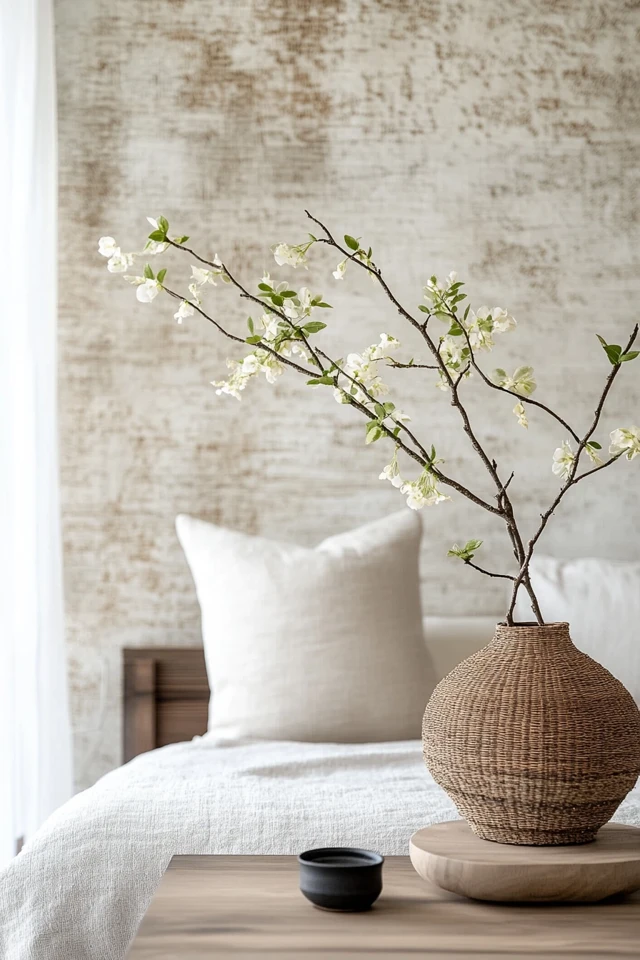
FAQ Section
1. What colors work best for subtle contrast in Scandinavian design?
Neutral tones like white, beige, and light gray work well as a base, while black, charcoal, navy, and muted colors like sage green or dusty pink provide gentle contrast.
2. How do I use contrast without overwhelming the minimalist aesthetic?
Focus on small, intentional additions like dark accents, textured materials, or bold shapes. Ensure the overall palette remains cohesive to avoid a cluttered look.
3. What materials should I use to add contrast?
Combine natural materials like light wood, jute, and wool with darker elements such as black metal, stained wood, or polished stone. Mixing textures also enhances contrast effectively.
4. Can I mix different wood tones in Scandinavian design?
Yes, mixing wood tones can add warmth and contrast. Pair light woods like birch or oak with darker tones like walnut or black-stained finishes for a balanced look.
5. What are some affordable ways to add contrast to a Scandinavian space?
Accessories like throw pillows, rugs, vases, and lamps are budget-friendly ways to introduce contrast. Even something as simple as a black picture frame or a dark tray can make a big impact.
Variations
- Minimalist Contrast: Stick to black-and-white contrasts with minimal décor for a clean, ultra-modern look.
- Warm and Cozy: Use rich textures like wool, jute, and velvet with warm wood tones to create a cozy, hygge-inspired space.
- Modern Edge: Incorporate bold, geometric shapes and industrial materials like metal and glass for a contemporary twist.
Conclusion
Subtle contrast is the secret to elevating Scandinavian décor, adding depth and personality while maintaining its hallmark simplicity. By thoughtfully introducing darker tones, textured materials, and varied shapes, you can create a space that feels balanced, inviting, and visually engaging. Whether you’re styling a living room, bedroom, or kitchen, these tips will help you master the art of subtle contrast and transform your home into a serene yet dynamic Nordic-inspired retreat.

